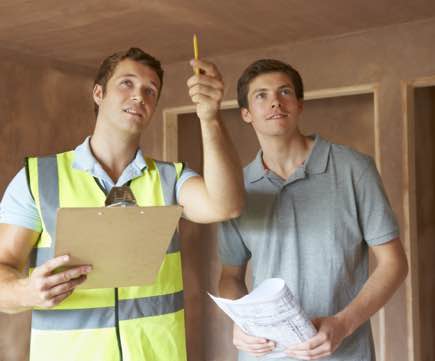Are you planning to sell your home? One crucial step you shouldn’t overlook is getting a pre-listing building inspection. By conducting an inspection before listing your property with a real estate agent Dromana, you can identify potential issues and address them proactively. In this ultimate guide, we’ll walk you through the importance of pre-listing building inspections and how they can help you sell your home faster. So, let’s dive in!
1. Introduction
Selling a home can be a stressful and time-consuming process. However, with proper preparation and attention to detail, you can make the journey smoother and more efficient. One essential step in this process is getting a pre-listing building inspection. In this comprehensive guide, we’ll cover everything you need to know about pre-listing building inspections and how they can help you sell your home faster. So, let’s get started!
2. What is a Pre-Listing Building Inspection?
A pre-listing building inspection, also known as a seller’s inspection, is a thorough examination of a property’s condition conducted before it is put on the market. During this inspection, a qualified professional inspects the major systems, components, and structural elements of the house to identify any existing or potential issues.
3. Why are Pre-Listing Building Inspections Important?
Now you might be wondering, why should you bother with a pre-listing building inspection when the buyers will get their own inspection anyway? Well, there are several reasons why pre-listing inspections are crucial:
- Early Awareness of Issues: By conducting a pre-listing inspection, you can identify and address potential issues before listing your home. This gives you the opportunity to make necessary repairs, improving the overall condition of your property.
- Increased Buyer Confidence: A pre-listing inspection report can provide potential buyers with a sense of transparency and trust. When buyers see that you have already taken the initiative to have your home inspected, they will feel more confident about the property’s condition.
- Reduced Negotiations: When buyers hire their own inspectors, they often discover issues that may require negotiations on the price or repairs. By having a pre-listing inspection, you can address these issues in advance, potentially reducing negotiations during the selling process.
- Faster Closing Process: By addressing any potential issues early on, you can avoid delays during the closing process. A smooth inspection and fewer negotiations can lead to a quicker sale, allowing you to move forward with your plans more efficiently.
4. How to Prepare for a Pre-Listing Building Inspection
Preparing for a pre-listing building inspection is vital to ensure a smooth and effective process. Here are some steps you can take to get ready:
- Declutter and Clean: Clear out any clutter and organize your home. A tidy space will make it easier for the inspector to access different areas of your property.
- Provide Documentation: Gather all relevant documentation related to your home, such as warranties, repair records, and maintenance history. This information can provide valuable insights to the inspector.
- Make Repairs: Address any minor repairs or maintenance issues before the inspection. Fixing leaky faucets, loose doorknobs, and other small problems will demonstrate that your home is well-maintained.
- Ensure Accessibility: Ensure that all areas of your home, including attics, crawl spaces, and electrical panels, are easily accessible. Move any obstacles that might hinder the inspector’s access.
- Consider Pre-Inspection Services: Some professional inspection companies offer pre-inspection services, which can help you identify potential issues beforehand. These services can provide valuable insights and recommendations to maximize your home’s appeal.
5. The Benefits of Pre-Listing Building Inspections
So, what are the specific benefits of investing in a pre-listing building inspection? Let’s take a closer look:
- Identify Hidden Issues: Pre-listing inspections often uncover hidden issues that may not be immediately apparent. By identifying these problems early on, you can take the necessary steps to rectify them, preventing surprises during the buyer’s inspection.
- Boost Buyer Confidence: Providing potential buyers with a detailed inspection report can enhance their confidence in your property. It shows that you have been proactive and transparent about the condition of your home, potentially increasing their trust and willingness to make an offer.
- Streamline Negotiations: By addressing any issues discovered during the pre-listing inspection, you can reduce the likelihood of extensive negotiations. Buyers will have a clearer understanding of the property’s condition, reducing the need for additional price adjustments or repairs.
- Shorten Time on Market: Homes with pre-listing inspection reports tend to spend less time on the market. The upfront investment in a pre-listing inspection can help attract more buyers and lead to a quicker sale.
- Maximize Sale Price: When you address potential issues and provide a clean inspection report, you position your home as a desirable and well-maintained property. This can potentially result in higher offers from buyers, allowing you to maximize your sale price.
6. Common Issues Found During Inspections
During a pre-listing building inspection, various issues may be uncovered. Here are some common ones to be aware of:
- Roofing Problems: Inspectors often find issues with roofs, such as missing shingles, leaks, or improper ventilation. Addressing these problems beforehand can prevent them from becoming deal-breakers.
- Electrical Deficiencies: Outdated electrical systems, improper wiring, or faulty outlets can pose safety hazards. Ensuring that your electrical system meets current standards is crucial.
- Plumbing Concerns: Inspectors may discover plumbing leaks, low water pressure, or outdated pipes. Fixing these issues can prevent water damage and improve the functionality of your plumbing system.
- Structural Defects: Foundation problems, cracks in walls or ceilings, and sagging floors are serious issues that can impact the overall stability of your home. Addressing these concerns is essential for buyer confidence.
- HVAC System Inefficiencies: Faulty heating, ventilation, and air conditioning (HVAC) systems can result in poor energy efficiency and uncomfortable living conditions. Ensuring your HVAC system is in good working order can add value to your home.
- Pest Infestations: The presence of pests, such as termites or rodents, can be a significant turn-off for buyers. Addressing pest issues promptly is crucial to maintain the integrity of your home.
Remember, each home is unique, and the issues discovered during inspections can vary. Addressing any identified problems promptly will increase the chances of a smooth selling process.
7. How to Choose a Qualified Inspector
Selecting a qualified inspector is essential to ensure a thorough and accurate inspection. Here are some tips to help you choose the right professional:
- Check for Licensing and Certification: Verify that the inspector you choose is licensed and certified. This ensures that they have met the necessary qualifications and adhere to industry standards.
- Experience Matters: Look for an inspector with substantial experience in conducting pre-listing inspections. Experienced inspectors are more likely to identify potential issues and provide detailed reports.
- Ask for References: Request references from past clients and take the time to read reviews or testimonials. Feedback from previous customers can give you insights into the inspector’s professionalism and quality of work.
- Consider Specializations: Depending on your property type or unique concerns, you may benefit from hiring an inspector with specific specializations, such as historic homes or eco-friendly properties.
- Request Sample Reports: Ask prospective inspectors for sample reports to get an idea of the level of detail they provide. A well-organized and comprehensive report is crucial for effective communication with buyers.
8. The Pre-Listing Building Inspection Process
Now that you understand the importance of pre-listing building inspections, let’s explore the typical process involved:
- Research and Hire: Begin by researching reputable inspection companies in your area. Once you’ve narrowed down your options, schedule an appointment with the inspector you choose.
- On-Site Inspection: The inspector will visit your property on the agreed-upon date and conduct a thorough examination of your home. They will assess various components, including the foundation, roof, electrical systems, plumbing, HVAC, and more.
- Documentation and Report: After the inspection, the inspector will compile their findings into a comprehensive report. This report will detail the condition of each inspected area, highlighting any existing or potential issues.
- Review and Address Issues: Take the time to review the inspection report carefully. If any significant issues are identified, consult with professionals to determine the best course of action for repairs or improvements.
- Reinspection (Optional): In some cases, you may choose to address the identified issues and request a reinspection to ensure they have been properly resolved. This can provide additional peace of mind for potential buyers.
9. FAQs About Pre-Listing Building Inspections
Here are some frequently asked questions about pre-listing building inspections:
Q: Should I get a pre-listing building inspection even if my house is newly built?
A: Absolutely! New constructions can also have defects or issues that are best addressed before listing your home.
Q: Can I use the pre-listing inspection report as a marketing tool?
A: Yes! You can provide potential buyers with a copy of the inspection report to showcase your home’s condition and demonstrate transparency.
Q: How much does a pre-listing building inspection cost?
A: The cost of a pre-listing inspection varies depending on factors such as the size of your home and its location. However, it is a worthwhile investment considering the potential benefits.
Q: Can I attend the inspection?
A: It’s generally recommended to let the inspector work independently to maintain objectivity. However, you can discuss this with the inspector beforehand if you have specific concerns or questions.
Q: How long does a pre-listing building inspection take?
A: The duration of an inspection depends on the size and complexity of the property. On average, inspections can take anywhere from 2 to 4 hours.
Q: What if the inspection reveals significant issues?
A: If significant issues are discovered, consult with professionals to understand the extent of the problems and determine the best course of action. Addressing these issues proactively can help minimize potential complications during the selling process.
10. Conclusion
Getting a pre-listing building inspection is a valuable step in preparing your home for sale. By identifying and addressing potential issues early on, you can instill confidence in buyers and streamline the selling process. From boosting buyer confidence to reducing negotiations, the benefits of pre-listing building inspections are significant. So, take the time to invest in a professional inspection and set yourself up for success when selling your home.
Remember, selling a home can be complex, and having expert guidance can make a world of difference. If you’re looking for more resources and support in navigating the selling process, consult with reputable real estate professionals in your area. With proper preparation and attention to detail, you’ll be well on your way to selling your home faster and with confidence.
Call us on 0409 693 974 during business hours, Monday to Friday from 8:30am to 5:00pm to speak to Robert.
Request an obligation free quote 24/7 via our Free Quote Form




